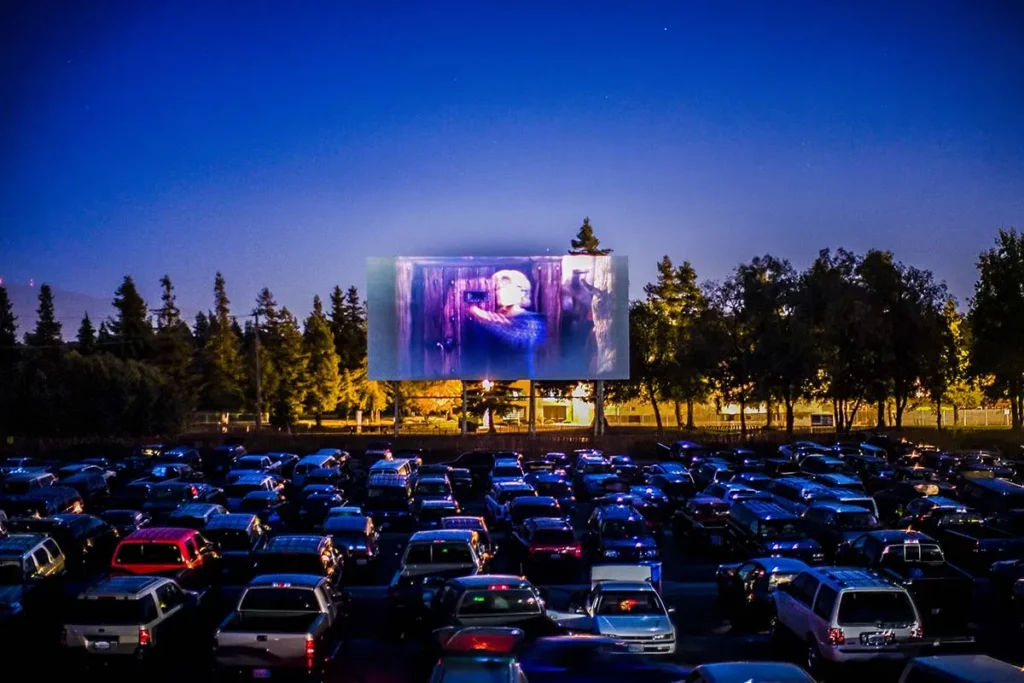Introduction
In an era dominated by streaming services and multiplex cinemas, the humble drive-in theater has experienced a surprising and heartening resurgence. Once considered a nostalgic relic of the past, drive-ins are making a comeback, capturing the imagination of audiences seeking a unique and socially distanced cinematic experience. This article explores the reasons behind the resurgence of drive-in theaters, delving into their historical significance, the impact of the COVID-19 pandemic, and the enduring appeal that has brought them back into the spotlight.
A Brief History of Drive-In Theaters
Drive-in theaters first emerged in the early 20th century, with the first patented drive-in design credited to Richard Hollingshead in 1933. The concept gained popularity in the United States during the 1950s and 1960s, becoming synonymous with the American cultural landscape. Drive-ins offered a novel way for families to enjoy movies from the comfort of their cars, complete with concession stands and playgrounds for children.
Historical Milestones
- The First Drive-In: On June 6, 1933, Richard Hollingshead opened the first drive-in theater in Camden, New Jersey, providing a space for patrons to watch movies comfortably in their vehicles.
- Golden Age of Drive-Ins: The 1950s and 1960s marked the heyday of drive-ins, with thousands of theaters across the United States offering a Stream Tribune unique and popular form of entertainment.
- Challenges and Decline: Factors such as the rise of home entertainment systems, changing land values, and urban development contributed to the decline of drive-ins during the latter half of the 20th century.
The Resurgence: A Perfect Storm of Factors
The revival of drive-in theaters can be attributed to a combination of factors that align with contemporary preferences and challenges.
Nostalgia and Retro Appeal
- Nostalgia for a Bygone Era: Drive-ins evoke a sense of nostalgia for a simpler time, resonating with both older generations who experienced their heyday and younger audiences seeking a taste of retro Americana.
- Escape from Digital Overload: In an era saturated with digital content, drive-ins offer a tangible and analog experience, providing a welcome escape from the constant screen time of modern life.
Social Distancing Amidst a Pandemic
- COVID-19 Impact: The global pandemic prompted the closure of traditional cinemas and led to increased interest in alternative, socially distanced forms of entertainment. Drive-ins, with their inherent physical separation, provided a safe option for moviegoers.
- Outdoor Entertainment: Drive-ins offer a unique outdoor entertainment experience, aligning with the renewed appreciation for open-air activities during the pandemic.
Family-Friendly and Community Appeal
- Family-Friendly Atmosphere: Drive-ins cater to families, offering an environment where parents can bring children without worrying about disturbing others. The freedom for children to move around and play adds to the family-friendly appeal.
- Community Building: Drive-ins foster a sense of community, with patrons sharing a communal space while maintaining a degree of privacy within their vehicles. This communal aspect has become increasingly valued in an age of digital isolation.
The Drive-In Experience Today
The resurgence of drive-ins has led to a modern reinterpretation of the classic experience, incorporating contemporary amenities and catering to diverse audiences.
Technological Upgrades
- Digital Projection: Many modern drive-ins have upgraded to digital projection, ensuring a high-quality viewing experience with clear and vibrant images.
- In-Car Audio Systems: Traditional pole speakers have been replaced by in-car audio systems, allowing patrons to tune in to the movie’s soundtrack through their vehicle’s radio.
Diverse Programming
- Live Events and Concerts: Beyond movies, drive-ins now host live events, concerts, and even stand-up comedy shows, expanding their offerings to cater to a broader audience.
- Cultural Events and Festivals: Drive-ins have become venues for cultural events and film festivals, providing a unique and socially distanced space for communal celebrations.
Culinary Offerings
- Gourmet Food Trucks: Some drive-ins have partnered with gourmet food trucks, elevating the culinary experience for patrons who can enjoy a variety of high-quality meals from the comfort of their cars.
- Concession Stand Innovations: Traditional concession stands have been revamped to offer a more diverse range of snacks and refreshments, appealing to contemporary tastes.
Challenges and Future Prospects
While the resurgence of drive-ins is a positive trend, challenges persist as the industry navigates changing consumer preferences, technological advancements, and potential post-pandemic shifts.
Land Use and Real Estate
- Land Development Pressures: The availability of suitable land for drive-ins is increasingly limited due to urban development and changing land-use priorities.
- Real Estate Costs: Rising real estate costs may pose challenges for both new drive-in startups and existing theaters looking to expand or upgrade their facilities.
Technological Evolution
- Integration of Augmented Reality: As technology continues to advance, drive-ins may explore the integration of augmented reality (AR) to enhance the overall viewing experience.
- Virtual Reality Experiences: The incorporation of virtual reality (VR) could provide an immersive cinematic experience, opening new possibilities for drive-ins.
Sustainability Concerns
- Energy Consumption: Drive-ins, particularly those relying on traditional projection methods, may face scrutiny regarding energy consumption. Adopting sustainable practices will be crucial for long-term viability.
- Waste Management: The increase in attendance means a potential rise in waste generation. Implementing effective waste management strategies will be essential for drive-ins to maintain their appeal.
Conclusion
The resurgence of drive-in theaters is a heartening testament to the enduring charm of a bygone era meeting the demands of contemporary audiences. Nostalgia, a desire for social distancing, and the family-friendly appeal have all contributed to the renewed interest in drive-ins. The evolution of these theaters, with technological upgrades, diverse programming, and culinary innovations, showcases their adaptability and resilience in the face of changing times.
As drive-ins continue to carve out a niche in the modern entertainment landscape, addressing challenges related to land use, technology, and sustainability will be crucial. The future prospects of drive-ins may involve a delicate balance between preserving the nostalgic elements that make them unique and embracing technological advancements that enhance the overall experience.
In a world where the pace of life seems to accelerate continually, the resurgence of drive-in theaters reminds us of the value of simplicity, community, and the timeless joy of watching a film under the open sky. Whether it’s the crackle of the radio, the smell of popcorn wafting through the air, or the shared experience with family and friends, the drive-in theater, once considered a relic of the past, is proving that it has a place in our present and, hopefully, in our future.



